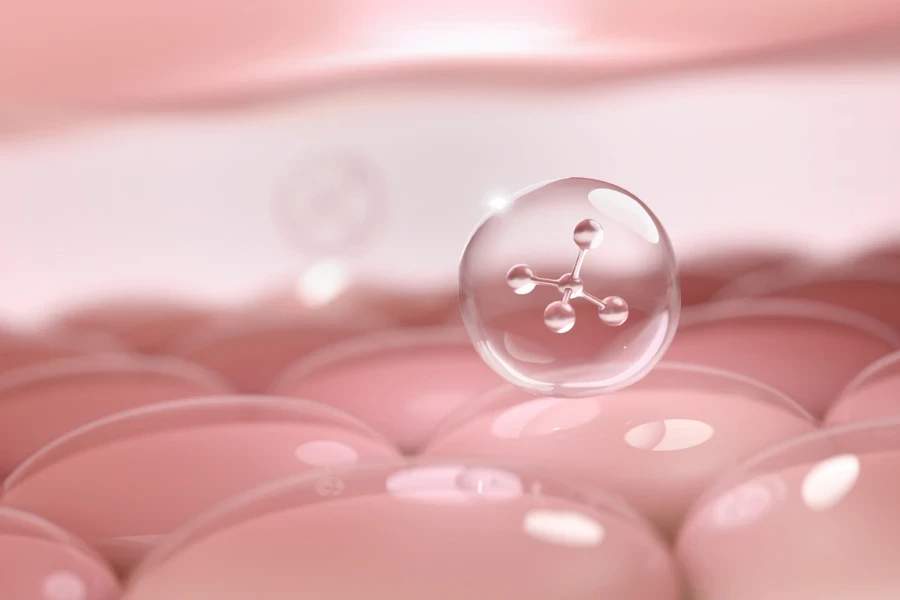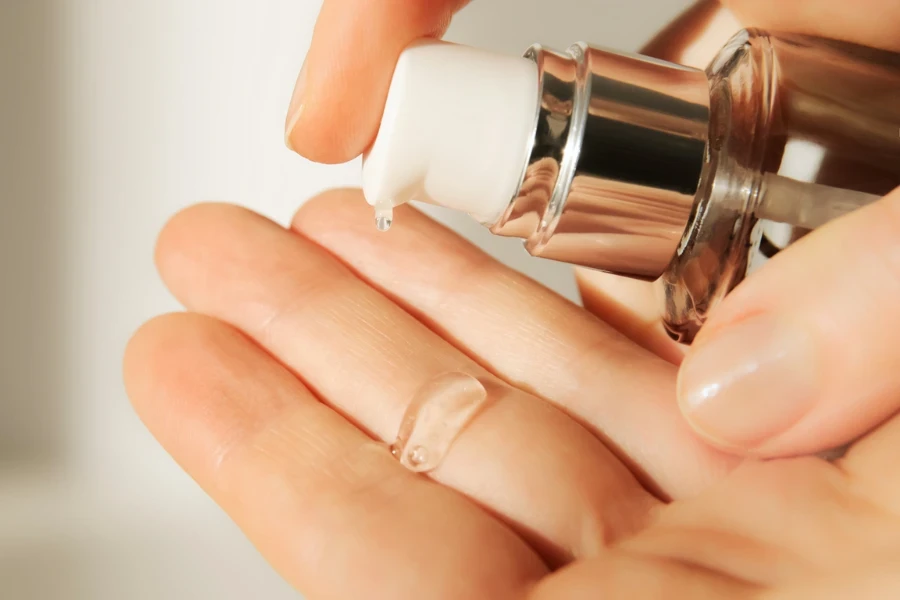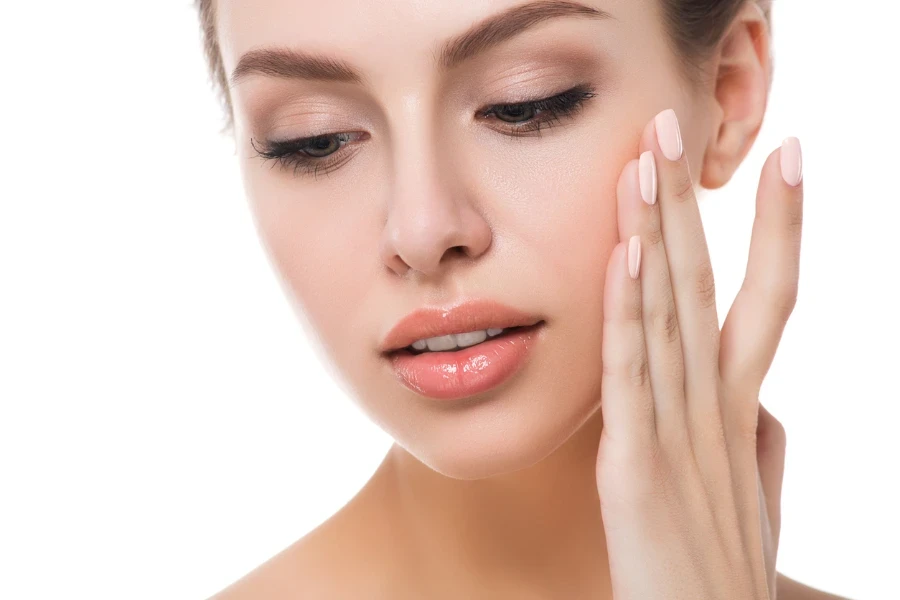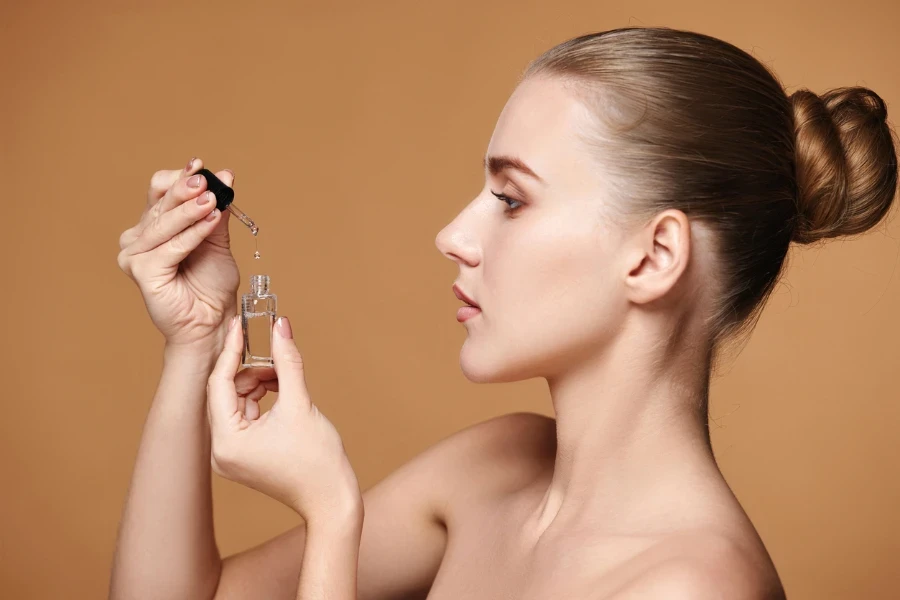In the ever-evolving world of beauty and skincare, two ingredients have emerged as frontrunners in the quest for youthful, radiant skin: Hyaluronic Acid and Retinol. As we step into 2025, these powerhouse components are not only dominating the market but also reshaping the way consumers approach skincare. This guide delves into the rising demand and market potential of Hyaluronic Acid and Retinol, offering valuable insights for business buyers looking to stay ahead in the competitive beauty industry.
Table of Contents:
– Unveiling the Power of Hyaluronic Acid and Retinol: Market Trends and Demand Growth
– Exploring Popular Hyaluronic Acid and Retinol Products: Types, Benefits, and Drawbacks
– Addressing Consumer Pain Points: Solutions for Common Skincare Concerns
– Innovations and New Products: What’s Shaking Up the Market?
– Key Factors to Consider When Sourcing Hyaluronic Acid and Retinol Products
– Wrapping Up: The Path Forward in Skincare Sourcing
Unveiling the Power of Hyaluronic Acid and Retinol: Market Trends and Demand Growth

Defining Hyaluronic Acid and Retinol: The Beauty Industry’s Dynamic Duo
Hyaluronic Acid and Retinol have become synonymous with effective skincare. Hyaluronic Acid, a naturally occurring substance in the skin, is renowned for its unparalleled hydrating properties. It can hold up to 1,000 times its weight in water, making it a staple in moisturizers, serums, and dermal fillers. On the other hand, Retinol, a derivative of Vitamin A, is celebrated for its ability to accelerate cell turnover, reduce fine lines, and improve skin texture. Together, these ingredients form a potent combination that addresses both hydration and anti-aging concerns, making them indispensable in modern skincare routines.
Social Media Buzz: Trending Hashtags and Influencer Endorsements
The influence of social media on beauty trends cannot be overstated. In 2025, hashtags like #HyaluronicAcid, #Retinol, and #SkincareRoutine are trending across platforms such as Instagram and TikTok. Influencers and dermatologists alike are endorsing products containing these ingredients, driving consumer interest and demand. According to a professional report, the global anti-wrinkle products market, which includes Retinol-based products, is projected to grow from USD 13.91 billion in 2024 to USD 20.50 billion by 2030, at a CAGR of 6.65%. This surge is fueled by the increasing awareness of skincare benefits and the growing popularity of social media beauty trends.
Aligning with Broader Trends: The Shift Towards Anti-Aging and Hydration
The broader beauty industry is witnessing a significant shift towards anti-aging and hydration solutions. As the global population ages, the demand for products that promise youthful, plump skin is on the rise. Hyaluronic Acid and Retinol are at the forefront of this trend. A report by Research and Markets highlights that the retinol skincare product market is expected to grow by USD 144.64 million during 2022-2027, with a CAGR of 4%. This growth is driven by product premiumization, new product launches, and innovations in formulations.
Moreover, the sodium hyaluronate-based products market, which includes Hyaluronic Acid, is projected to reach USD 17.73 billion by 2030, growing at a CAGR of 7.7% from 2023 to 2030. This growth is attributed to the increasing geriatric population, rising awareness of non-invasive aesthetic procedures, and advancements in skincare technology. The demand for anti-aging cosmetics and aesthetic treatments is particularly high in regions like North America and Asia-Pacific, where consumers are willing to invest in premium skincare solutions.
In conclusion, the market potential for Hyaluronic Acid and Retinol is immense, driven by their proven efficacy and the growing consumer focus on anti-aging and hydration. Business buyers in the beauty industry should capitalize on these trends by incorporating these ingredients into their product offerings, leveraging social media endorsements, and staying attuned to consumer preferences for innovative and effective skincare solutions.
Exploring Popular Hyaluronic Acid and Retinol Products: Types, Benefits, and Drawbacks

Serums and Creams: A Deep Dive into Ingredients and Effectiveness
Hyaluronic acid and retinol are two powerhouse ingredients in the skincare industry, each offering unique benefits. Serums and creams are the most common formulations for these ingredients, and understanding their composition and effectiveness is crucial for business buyers. Hyaluronic acid serums are typically lightweight and designed to deliver intense hydration by attracting moisture to the skin. They often contain varying molecular weights of hyaluronic acid to penetrate different skin layers, ensuring comprehensive hydration. On the other hand, retinol creams are formulated to promote cell turnover and collagen production, addressing concerns like fine lines, wrinkles, and hyperpigmentation. These creams often include stabilizing agents to maintain retinol’s potency and minimize irritation.
Consumer Feedback: What Users Love and What They Don’t
Consumer feedback is a valuable resource for understanding the real-world performance of hyaluronic acid and retinol products. Users often praise hyaluronic acid serums for their immediate hydrating effects and the plump, dewy skin they achieve. However, some consumers report that certain formulations can feel sticky or cause breakouts if not properly balanced with other skincare steps. Retinol products, while celebrated for their anti-aging benefits, can be a double-edged sword. Many users appreciate the visible improvements in skin texture and tone, but others experience initial irritation, dryness, and peeling, especially with higher concentrations. This feedback highlights the importance of offering a range of formulations to cater to different skin tolerances and needs.
Comparing Product Types: Finding the Right Fit for Different Skin Types
Selecting the right hyaluronic acid or retinol product depends significantly on the consumer’s skin type. For dry or sensitive skin, hyaluronic acid serums with added soothing ingredients like aloe vera or chamomile can provide hydration without irritation. Retinol creams for sensitive skin often include lower concentrations of retinol and are paired with hydrating and calming ingredients like ceramides and niacinamide. For oily or acne-prone skin, lightweight, non-comedogenic hyaluronic acid serums are ideal, while retinol products with added anti-inflammatory ingredients can help manage breakouts and reduce oil production. Understanding these nuances allows business buyers to curate a diverse product range that meets the varied needs of their customer base.
Addressing Consumer Pain Points: Solutions for Common Skincare Concerns

Tackling Sensitivity and Irritation: Gentle Formulations and Alternatives
Sensitivity and irritation are common concerns with active ingredients like retinol. To address this, many brands are developing gentle formulations that include encapsulated retinol, which releases the active ingredient slowly to minimize irritation. Additionally, alternatives like bakuchiol, a plant-based retinol alternative, are gaining popularity for their similar benefits without the associated irritation. Hyaluronic acid products are generally well-tolerated, but for those with extremely sensitive skin, formulations with added anti-inflammatory ingredients can help soothe and protect the skin barrier.
Overcoming Product Incompatibility: Layering and Usage Tips
Product incompatibility can lead to ineffective results or adverse reactions. Educating consumers on proper layering and usage is essential. For instance, hyaluronic acid should be applied to damp skin to maximize its hydrating effects, followed by a moisturizer to lock in moisture. Retinol should be introduced gradually, starting with lower concentrations and increasing as the skin builds tolerance. It is also crucial to avoid combining retinol with other potent actives like AHAs or BHAs in the same routine to prevent irritation. Providing clear usage guidelines can enhance product efficacy and customer satisfaction.
Ensuring Visible Results: Setting Realistic Expectations and Timeframes
Setting realistic expectations is key to customer satisfaction. Hyaluronic acid products can deliver immediate hydration, but long-term benefits like improved skin texture and elasticity may take several weeks to become noticeable. Retinol, known for its transformative effects, typically requires consistent use over several months to see significant improvements in fine lines, wrinkles, and hyperpigmentation. Educating consumers about these timeframes and the importance of consistent use can help manage expectations and reduce dissatisfaction.
Innovations and New Products: What’s Shaking Up the Market?

Breakthrough Formulations: Combining Hyaluronic Acid and Retinol with Other Actives
Innovative formulations are at the forefront of the skincare market, combining hyaluronic acid and retinol with other active ingredients to enhance their benefits. For example, products that pair hyaluronic acid with peptides can boost collagen production and improve skin elasticity. Similarly, combining retinol with antioxidants like vitamin C can enhance its anti-aging effects while protecting the skin from environmental damage. These multi-functional products cater to consumers’ desire for comprehensive skincare solutions, making them a valuable addition to any product lineup.
Emerging Brands: Fresh Faces in the Skincare Scene
The skincare market is continually evolving, with new brands emerging that offer unique takes on hyaluronic acid and retinol products. Brands like Era Organics have introduced innovative products like the Glycolic Acid Chemical Peel, which combines multiple active ingredients for professional-grade results at home. These emerging brands often focus on clean, sustainable formulations and transparent ingredient sourcing, appealing to the growing consumer demand for ethical and effective skincare products.
Technological Advancements: Smart Skincare and Personalized Solutions
Technological advancements are revolutionizing the skincare industry, with smart skincare devices and personalized solutions becoming increasingly popular. Devices that enhance the penetration of hyaluronic acid and retinol, such as microcurrent and LED therapy tools, are gaining traction. Additionally, personalized skincare solutions that use AI and machine learning to analyze individual skin needs and recommend tailored products are on the rise. These innovations not only improve product efficacy but also offer a unique, customized experience that can drive customer loyalty.
Key Factors to Consider When Sourcing Hyaluronic Acid and Retinol Products

Quality and Purity: Ensuring High Standards and Certifications
Quality and purity are paramount when sourcing hyaluronic acid and retinol products. Ensuring that raw materials meet high standards and certifications, such as ISO and GMP, is crucial for product safety and efficacy. Hyaluronic acid should be sourced from reputable suppliers who use sustainable and ethical production methods. Similarly, retinol should be stabilized and tested for potency to ensure consistent results. Business buyers should prioritize suppliers who provide detailed documentation and transparency about their sourcing and manufacturing processes.
Supplier Reliability: Building Trust and Long-Term Partnerships
Building trust and long-term partnerships with reliable suppliers is essential for maintaining a consistent supply of high-quality products. Evaluating a supplier’s track record, customer reviews, and responsiveness can provide insights into their reliability. Establishing clear communication channels and setting expectations for quality, delivery times, and support can help foster a strong, collaborative relationship. Reliable suppliers can also offer valuable insights and support for product development and innovation.
Market Demand and Trends: Staying Ahead of Consumer Preferences
Staying ahead of market demand and trends is crucial for business buyers. Monitoring consumer preferences, such as the growing interest in clean beauty and sustainable packaging, can inform product development and sourcing decisions. Additionally, keeping an eye on emerging trends, such as the rise of personalized skincare and smart devices, can help businesses stay competitive. Collaborating with suppliers who are also attuned to market trends can provide a strategic advantage in meeting consumer needs and driving growth.
Wrapping Up: The Path Forward in Skincare Sourcing
In conclusion, sourcing hyaluronic acid and retinol products requires a comprehensive understanding of market trends, consumer preferences, and supplier reliability. By focusing on quality, innovation, and strategic partnerships, business buyers can curate a product range that meets the diverse needs of their customers and stays ahead in the competitive skincare market.




